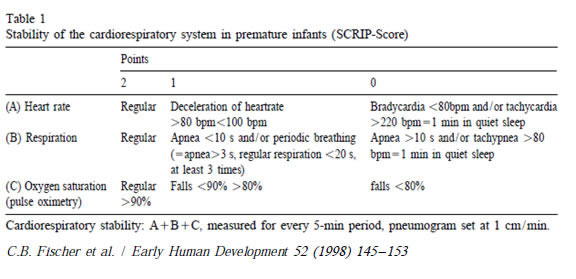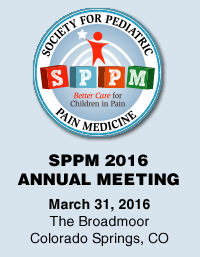Non-pharmacologic Impacts on Neonatal Pain and Assessment (NINPA)
 By Franklin Chiao, MD
By Franklin Chiao, MD
Assistant Professor of Anesthesiology
Komansky Children’s Center
New York Presbyterian Medical Center-Weill Cornell Medical College
[email protected]
Twitter: TheDOCFrancois
When a mother holds her newborn, it is not only a memorable and endearing experience, it is also analgesic. For the neonate, there are several physiologic and analgesic benefits to this instinctual bonding. The skin to skin contact (SSC) between mother and neonate is only one of the non-pharmacological methods of pain control. Others include non-nutritive sucking (NNS) such as with pacifiers, or with fingers. Another technique involves gustatory stimulus with sweet solutions or milk. These are all important adjuncts to neonatal comfort and analgesia.
Non-pharmacologic neonatal pain control has multiple benefits and has differing mechanisms of action. Sweet tastes and milk, for example, have opioid mediated mechanisms of action and have been demonstrated to increase the pain threshold in rats1. The gustatory system is active as early as the fetal period2. Furthermore, non-nutritive sucking such as with a pacifier or finger results in lower cortisol levels3. The exact analgesic mechanism for skin to skin contact is unknown, but it can even result in better glycemic control and temperature regulation than an incubator4. In addition, massage increases vagal activity and decreases cortisol levels5. It is unclear though that using certain combinations like sucrose and a pacifier are consistently additive in their analgesia, but multisensorial and multimodal stimulation have resulted in increased analgesic effects2.
The onset of analgesic effects is also different between the techniques. Skin to skin contact requires up to 10-15 minutes in order to decrease crying with heel lance, while non-nutritive sucking and sweet solutions have more immediate impacts3. Skin to skin contact is person dependent, and works best with the mother whereas non-nutritive sucking is contact independent and can be provided by anyone available.
A number of research papers have demonstrated procedure specific evidence for analgesia with SSC, non-nutritive sucking, and sweet solutions/milk. Non-nutritive sucking decreases heart rate, crying and pain scores during circumcision6. Pacifier use decreases pain responses to venipuncture, heel sticks and lumbar puncture7. Sweet solutions such as 2ml of sucrose, given 2 minutes before venipuncture was shown to decrease pain scores7. Breastfeeding has similar effects in decreasing the pain scores8. Skin to skin contact decreased crying by 82% and grimacing by 65% during heel lance1. Further research has found crying decreases with greater touching of the infant9. Less stress behavior occurred with similar tactile stimulation10.
Pain assessment can be disrupted by hemodynamic changes with skin to skin contact. Skin to skin contact causes an increase in heart rate potentially from venous pooling in the upright position and improved hemodynamic scores as measured by SCRIP (e.g. it measures stability of the cardio-respiratory system – through scoring of O2 saturation, respiratory status, and heart rate - Table 1)11. This heart rate increase could cause needless concern in the provider trying to lower pain scores. Increased temperature and reduced respiratory rate were also seen in the same study, so obvious pain score changes from hemodynamic alterations alone are not clear. One should keep in mind and counsel parents accordingly that the routine use of a pacifier is not recommended by the AAP after the age of six months7.

Non-pharmacologic techniques of neonatal pain assessment are varied in mechanism and simple to use. Skin to skin contact, non-nutritive sucking and sweet solutions/milk offer neonatologists, nurses, other caregivers, and pain management physicians the opportunities to improve neonatal comfort. The use of these techniques has limited application in the intraoperative period, but with the renewed enthusiasm for infant neuraxial techniques as a primary anesthetic, non-nutritive sucking and sucrose are valuable adjuncts. In the immediate peri-operative period, healthcare providers such as anesthesiologists may encourage more skin to skin contact, non-nutritive sucking and tactile stimulation to further improve neonatal comfort.
References
- Gray et al., 2000. Gray L., Watt L., and Blass E.M.: Skin-to-skin contact is analgesic in healthy newborns. Pediatrics 2000; 105: pp. e14
- Bellieni et al., 2002. Bellieni C.V., Bagnoli F., Perrone S., et al: Effect of multisensory stimulation on analgesia in term neonates: a randomized controlled trial. Pediatr Res 2002; 51: pp. 460-463
- South et al., 2005. South M.M., Strauss R.A., South A.P., et al: The use of non-nutritive sucking to decrease the physiologic pain response during neonatal circumcision: a randomized controlled trial. Am J Obstet Gynecol 2005; 193: pp. 537-542
- Bergman et al., 2004. Bergman N.J., Linley L.L., and Fawcus S.R.: Randomized controlled trial of skin-to-skin contact from birth versus conventional incubator for physiological stabilization in 1200- to 2199-gram newborns. Acta Paediatr 2004; 93: pp. 779-795
- Acolet et al., 1993. Acolet D., Modi N., Giannakoulopoulos X., et al: Changes in plasma cortisol and catecholamine concentrations in response to massage in preterm infants. Arch Dis Child 1993; 68: pp. 29-31
- Shiao et al., 1997. Shiao S.Y., Chang Y.J., Lannon H., et al: Meta-analysis of the effects of nonnutritive sucking on heart rate and peripheral oxygenation: research from the past 30 years. Issues Compr Pediatr Nurs 1997; 20: pp. 11-24
- Sexton and Natale, 2009. Sexton S., and Natale R.: Risks and benefits of pacifiers. Am Fam Physician 2009; 79: pp. 681-685
- Osinaike et al., 2007. Osinaike B.B., Oyedeji A.O., Adeoye O.T., et al: Effect of breastfeeding during venepuncture in neonates. Ann Trop Paediatr 2007; 27: pp. 201-205
- Jahromi et al., 2004. Jahromi L.B., Putnam S.P., and Stifter C.A.: Maternal regulation of infant reactivity from 2 to 6 months. Dev Psychol 2004; 40: pp. 477-487
- Kuhn et al., 1991. Kuhn C.M., Schanberg S.M., Field T., et al: Tactile-kinesthetic stimulation effects on sympathetic and adrenocortical function in preterm infants. J Pediatr 1991; 119: pp. 434-440
- Fohe et al., 2000. Fohe K., Kropf S., and Avenarius S.: Skin-to-skin contact improves gas exchange in premature infants. J Perinatol 2000; 20: pp. 311-315

